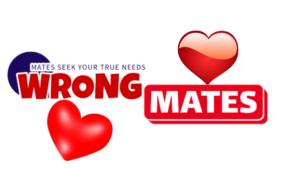
Source: Jenny Grant Rankin, PhD, used with permission
When we were kids, our country was far less polarized. The U.S. president won the 1980 election won 49 out of 50 states—something unimaginable for any party in this year’s election. My mother was a Democrat and my father was a Republican, yet I never once heard them fight about politics. Before this age of on-demand news catered to our leanings, it used to be that the more someone watched TV the more they would be open to political compromise, so youth saw the adults around them modeling political tolerance.
Yet today is a different story. Youth see the democrats and republicans around them arguing (if the two sides are even speaking at all). Researchers at Brown University and Stanford University found that political polarization in the US has grown rapidly—and even faster than in other countries—in the last 40 years. But it does not have to be this way.
Social Proof
If we see a long line at a restaurant, we see that as a sign from our peers that we should eat there, too. If we see a movie get five stars in our streaming service, we see that as a sign from our peers that we should watch the movie, too. If we see barren grocery store shelves during a pandemic, we see that as a sign from our peers that we should hoard toilet paper, too. We notice what those around us (and, in particular, those most like us) are doing, and that feedback serves as social proof to guide our herd mentality.
The term “social proof” was coined by psychologist Robert Cialdini to describe the signs we use to identify our peers’ actions, attitudes, and beliefs, which we use to determine how it is most appropriate for us to then behave. Social proof is tied to our basic instincts for social belonging, as our ability to conform and function as a social group gave us an evolutionary advantage over hundreds of thousands of years. As a result, we instinctually follow the crowd with little thought as to why. Social proof can cause problems when the crowd is misguided, but it also holds hope when we apply social proof conscientiously, as we saw when the ice bucket challenge raised awareness and funds for ALS. Herein lies our opportunity.
Wear Purple on Election Day
Our need to signal inclusion to our group identities means we don’t walk around in “Moderate” T-shirts, “Make America Less-Polarized Again” caps, or “When We Compromise, We Win” sweatshirts. This means we Americans lack the social proof to see how many people are fed up with polarized squabbles that stagnate our country’s progress.

Source: Jenny Grant Rankin, PhD, used with permission
I have a proposition: Every election day (including primaries), wear purple if you are tired of Democrats and Republicans fighting and yearn for discussion, candidates, and solutions that honor the best points from both sides of the widest political aisle. This isn’t about promoting a particular party; vote for whichever party you wish. But if you want less polarization, wear purple. Presidential election day in the US is always the Tuesday after the first Monday in November (e.g., November 5 in 2024).
I vow to wear purple on every election day from now on. At first, not enough of us will be purple-clad for the politicians to notice, but over time, if that number grows, there will eventually come a tipping point. If every American who yearns for no polarization ultimately wears purple on election days, politicians and voters will see compromise, respect, and collaboration as the popular stance and can use that social proof to heal our country’s political divide…just as they use a long wait line to pick a restaurant.

